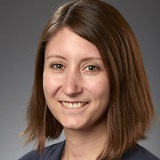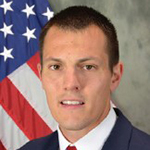Jennifer Nekuda Malik
Editor, Intersections
Welcome to the Winter Edition of Intersections.
Since our last newsletter, former Intersections Editor Leonard (Len) Brillson was elected to the MRS Board of Directors, and Intersections has been incorporated into the responsibilities of the Advocacy Engagement Subcommittee. We would like to thank Len for his many years of service as Intersections Editor and an active member of the Government Affairs Committee.
This issue, Dr. Gleb Yushin, a Co-Founder of Sila Nanotechnologies, Inc., highlights the value of partnerships between the federal government, academia, and industry through the example of lithium-ion batteries. From the groundbreaking development of Li-ion batteries that received a Nobel Prize in Chemistry in 2019, to the successful commercialization of advanced battery research -- early and sustained government funding and collaboration across academia and industry have driven innovation.
MRS Government Affairs Committee (GAC) Chair David Norton reflects on the value of the MRS conferences and the materials-related challenges of the future.
Federal funding for the upcoming year is highlighted by Damon Dozier, MRS Director of Government Affairs. The consolidated appropriations bill, passed at the end of 2019, increased funding for science and technology related research and development across the U.S. funding agencies.
Boris Dyatin, Grassroots Subcommittee Chair, writes about the member letter-writing campaign during the 2019 MRS Fall Meeting to advocate for strong federal research budgets. In addition to calling for sustained budgets across the board, letters also focused on maintaining support for the Department of Energy’s Advanced Research Projects Agency (ARPA-E) and federal research in quantum and artificial intelligence, among others.
Advocacy Engagement Subcommittee Chair Jennifer Nekuda Malik highlights an ongoing effort to produce materials success stories to elucidate the connection between federal investment in research and a range of materials-related breakthroughs.
Ashley White, Congressional Fellowship Program Chair, describes the activities of MRS’s latest co-sponsored Congressional Science and Engineering Fellows, including participation in the 2019 information session held at the MRS Fall Conference.
Congressional Visits Day Chair Bill Hammetter outlines preparations for the Spring 2020 visits to Capitol Hill. This includes preparing materials to leave with offices and talking points for members to discuss during these meetings.
Lastly, Jeremy Ward, the new Government Agency Subcommittee Chair, introduces himself, writes about the research funding sessions held during the 2019 MRS Fall Meeting, and announces the Spring 2020 Conference information session on government funding.
A Value-Added Materials Research Story
Materials That Set a New Standard For the Next Generation of Lithium-Ion Batteries
 Dr. Gleb Yushin
Dr. Gleb Yushin
Professor, Georgia Institute of Technology
Editor-in-Chief, Materials Today
Co-Founder and CTO, Sila Nanotechnologies, Inc.
I joined the School of Materials Science and Engineering at Georgia Institute of Technology in 2007 and was very interested in finding new opportunities in lithium (Li)-ion battery research for electric transportation. Last year, the co-inventors of traditional “intercalation-type” Li-ion batteries received a Nobel prize, recognizing them for their innovation and simultaneously giving a huge spiritual boost to battery scientists worldwide.
It is hard to believe now - especially when everyone is so excited about the numerous projects that may help accelerate the move to a clean-energy economy - that 13 years ago the Li-ion battery field was labeled as “mature” and “unexciting” by many.
Still, I personally was fascinated by “conversion-type” electrode materials for Li-ion batteries, as they offer an opportunity to increase gravimetric energy density – essentially the amount of energy that can be stored in the battery – three times over. But the problem was, they were known to fade rapidly. Silicon (Si), for example, was known to store 10 times more Li than a traditional graphite anode, but it only lasted 10-20 charge-discharge cycles. While I didn’t know much about Li batteries when I started, I believed my broad background in materials would help me to identify the root causes of such unstable behavior.
I was fortunate to receive a large National Aeronautics and Space Administration (NASA) grant in 2008 and led a team studying the impact of polymer binder properties on the mechanical stability of Si anodes that undergo over a 300% volume change at the particle level during cycling. This research led to multiple critical insights on the behavior of nano-sized Si (details published in Science: https://science.sciencemag.org/content/334/6052/75 and ACS Applied Materials & Interfaces: https://pubs.acs.org/doi/abs/10.1021/am100871y).
With the help of another NASA grant (Small Business Innovation Research - SBIR) in 2009, we learned that the formation of nanocomposite particles may help us to mitigate volume changes at the particle level (details published in Nature Materials: https://www.nature.com/articles/nmat2725). Most importantly, we learned that by far the biggest challenge to practical applications was to stabilize the solid electrolyte interphase (SEI) that forms between Si and a Li-ion battery electrolyte.
Si expansion that destroys the SEI is fundamental, meaning it is a property of the material and cannot be changed. But we came up with a true materials science solution – the formation of a rigid, porous core-shell composite particle architecture, where Si expansion during lithiation is fully accommodated by the internal pores, and where the outer particle dimensions that electrolyte “sees” don’t change (details published in the Journal of the American Chemical Society:https://pubs.acs.org/doi/abs/10.1021/ja1031997). Essentially, this shell holds Si with enough room for it to expand and contract without destroying the battery in the process. This was the first demonstration of a stable SEI in Si anodes that inspired a broad range of similar concepts worldwide.
It was at this time in my career that I realized a startup environment would offer the resources and diverse expertise outside of the materials field that were needed to further develop and scale-up Si anode technology.
It took almost two years, but eventually I found ideal co-founders in Gene Berdichevsky and Alex Jacobs, who incorporated the remarkable engineering and entrepreneurial experiences needed to start Sila Nanotechnologies, Inc. within a Georgia Tech startup incubator.

Left to right: Prof. Gleb Yushin, Mr. Alex Jacobs, and Mr. Gene Berdickevsky
|
Together we received Series A funding from SutterHill Ventures and Matrix Partners, our amazingly supportive founding investors who have been providing tremendous help and advice ever since. We were also able to match the VC’s funding with a large Advanced Research Projects Agency - Energy (ARPA-E) SBIR grant and smaller Georgia, National Science Foundation (NSF) and industry funding.
Even with an A-team of highly talented and driven scientists and engineers, it took us twice as long and twice as much funding to get to a working prototype than we initially expected. After over ten thousand material iterations we produced a novel, precisely engineered Si-based composite material that was drop-in and fully compatible with Li-ion battery factories. Most importantly, it performed well on over twenty different metrics (not just the few needed for academic publications), relied on low-cost commodity precursors and was scalable to huge industrial volumes.
In another two years we designed and built the first pilot production line, which has been in operation 24/7 for the past two years. Now Sila Nano is finalizing its first production line and we are in the process of designing our first “Giga-Factory” to supply materials for next-generation Li-ion batteries to our industrial partners in the electronics and automotive industries.
To the best of my knowledge, there is no match to Sila Nano’s anode product performance anywhere in the world. This is supported by our multiple industrial partners and financial institutions, who have invested over $340M into the company to date.
Still, the innovation machine at Sila Nano doesn’t stop – we are constantly working on performance improvements, developing and fine-tuning novel synthesis routes and exploring future products. We direct investment funding towards the scale-up of the anode product, with any additional grants Sila Nano receives from ARPA-E and the Department of Energy (DOE) providing the oxygen we need to feed our innovations.
Sila Nano has licensed other technologies from my lab at Georgia Tech, including one that unexpectedly came from a very fundamental NSF-sponsored project (my original CAREER proposal). Working on Army Research Office (ARO), NASA and Air Force Office of Scientific Research (AFOSR) grants at Georgia Tech - supporting education and fundamental research - has also inspired me to explore multiple new product ideas.
Sila Nano currently employs over 160 people (including 18 former Georgia Tech students), occupies three buildings in Alameda, California, and is valued at over $1B (
Sila Nanotechnologies, Inc.)
Government Affairs Committee Chair News
 David Norton
David Norton
Chair, Government Affairs Committee
I am always amazed at the energy and engagement that permeates the fall and spring meetings of the Materials Research Society. This past meeting in Boston was no different. People from around the globe gathered to exchange research outcomes, to motivate new ideas, collaborations, and pursuits in understanding and discovering the science of new and known materials. The field of materials science is now exploiting new capabilities in artificial intelligence and synthetic biology, embracing societal demands for sustainability and environmental stewardship, and working closely with government agencies to yield effective policy and programs that advance humankind and a healthy planet.
We are now 20 years into the 21st century, and it is a bit intimidating how quickly advances in science and technology are changing and impacting our daily lives. And with these advances come new challenges for materials that support and enable these technologies. Pushing to the next breakthroughs is greatly facilitated through effective trifold partnerships between academic institutions, industry, and government. The Materials Research Society remains committed to these three sectors of research and innovation as we seek to create a better world for future generations.
What's Happening in Washington
 Damon Dozier
Damon Dozier
MRS Director of Government Affairs
Right before the end of the 2019 calendar year, Congressional negotiators cemented a $1.3 trillion federal spending deal. A lengthy bill at more than 2,000 pages, it included a pay raise for federal workers, a resolution to issues around border wall funding, and, most importantly for US members of MRS, increased science and technology (S&T) and research and development (R&D) funding across domestic funding agencies.
The Department of Energy (DOE) Office of Science received a 6% increase in the final spending package, which brought its budget to $7 billion dollars - the same amount that MRS advocated for during its Congressional Visits Days activities. Since fiscal year 2017, its budget has increased by 30%, or more than $1.6 billion. The bill also accepts the Senate proposal to allocate $195 million from across the office’s programs to quantum information science (QIS), including $75 million for establishing up to five research centers, as called for in the National Quantum Initiative Act. A further $71 million is directed to artificial intelligence (AI) and machine learning (ML), two MRS priorities. This year, the budget for the Office of Energy Efficiency and Renewable Energy (EERE) will increase 20% to $2.85 billion. The Office of Nuclear Energy will receive a 13% increase to $1.49 billion, which includes $230 million for a new program to support advanced reactor demonstration projects. The Advanced Research Projects Agency–Energy (ARPA-E) is another MRS priority, and its budget will increase 16% to a new record high of $425 million.
As far as the National Science Foundation (NSF) is concerned, the budget for NSF’s research and education accounts increased 3%, to $6.74 billion and $940 million respectively. While the exact amount of an increase to funding for the Division of Materials Research (DMR) is unclear, Congress did add significant funding for the implementation of the National Quantum Initiative Act.
As it has done in the past, Congress continues to provide large funding increases for DOD’s Research, Development, Test, and Evaluation accounts this year, adding more than $9 billion, a 10% increase, for a total of $105 billion. As a part of that, basic research accounts received a significant increase.
The National Institute of Standards and Technology (NIST) budget will rise 5% to just above $1 billion, with its laboratory programs receiving the lion’s share of the $49 million increase. Of the increase, the bill directs NIST to allocate $10 million to QIS and $8 million to AI research.
Finally, Congress is not providing funding to revive the Office of Technology Assessment as the House had proposed, and which the MRS encouraged through a letter-writing advocacy campaign. However, it states that stakeholders in Congress will “continue to evaluate” recommendations from a recent report by the National Academy of Public Administration for addressing gaps in Congress’ access to science and technology expertise. Congress is also increasing funding for the Government Accountability Office by $40 million, noting it will allow the office to continue to enhance its work on S&T issues.
Grassroots Subcommittee News
 Boris Dyatkin
Boris Dyatkin
Chair, Grassroots Subcommittee
The grassroots subcommittee used the fall of 2019 to provide our society’s members an opportunity to advocate on behalf of pragmatic science policy and reach out to their elected officials. The subcommittee members closely followed ever-evolving developments on Capitol Hill and selected four key issues for Materials Voice Letters. The subcommittee drafted advocacy letters to urge lawmakers to: 1) sustain uninterrupted funding to federal research agencies; 2) increase funding for Department of Energy’s Advanced Research Projects Agency (ARPA-E); 3) support federal research in quantum and artificial intelligence fields; and 4) restore the Office of Technology Assessment in the United States Congress.
Our members took action and sent over 1,330 of these letters to the U.S. President, along with members of the United States Senate and House of Representatives, during the 2019 MRS Fall Meeting in Boston. The grassroots subcommittee owes a debt of gratitude to the hundreds of MRS members who stopped by the booth to make their voices heard, along with the student volunteers who tirelessly staffed the kiosk and raised awareness of this advocacy opportunity.
The timing of our efforts was exceptionally fortuitous: the United States Congress was debating the specific appropriations bills at the exact moment as our letters arrived at their offices. Fortunately, Congress and the President agreed to a budget and averted a shutdown. Furthermore, the House Science Committee held a hearing on the Office of Technology Assessment shortly after our Materials Voice campaign.
As we look at the emerging issues that will make headlines in 2020, we, as professional members of a leading scientific society, must remain informed about the key policy issues that will significantly impact our profession. Science policy stretches far beyond budgets and funding. As emerging technological breakthroughs enter our lives, our nation faces unprecedented challenges and concerns. Growing cybersecurity concerns, rising economic and military challenges to our nation, and protection of intellectual property from foreign adversaries are at the forefront. Federal research agencies are rising to meet these challenges, and, subsequently, issue new policy directives regarding funding guidelines and reporting requirements. Our subcommittee will continue to monitor policy developments and provide a voice for our Society’s members to advocate on behalf of critical materials science policy issues.
Advocacy Engagement Update
 Jennifer Nekuda Malik
Jennifer Nekuda Malik
Chair, Advocacy Engagement Subcommittee
Finalizing the first set of materials success stories has continued to dominate the Advocacy Engagement (AE) Subcommittee's time in the last quarter. These brief stories highlight a specific materials breakthrough, acknowledge the federal funding that supported the research, and point to the importance of continued federal investments in science and research. When finished, these stories will be posted on the GAC website and used as handouts during Congressional visits to help increase understanding of the impacts of materials research and bolster support for strong science budgets. The first of these stories - highlighting the many uses of diamond-like carbon - is nearly finished and will be printed this winter. Four other stories are in the final stages of writing/editing, and the goal is to have the first 5 stories printed and ready for the 2020 Spring Congressional Visits Days.
The AE subcommittee has also assumed responsibility for the Intersections newsletter starting with this edition. Long-time Intersections Editor Leonard (Len) Brillson was elected to the MRS Board of Directors, and with the beginning of his term in 2020, had to step down as Editor. Under Len's leadership, Intersections highlighted the government-related activities of the MRS as well as published stories about materials that have built upon government-funded research and made the leap to commercialization within the private sector. Such stories illustrate both the need for government funding, and the potential of materials research to impact the economy, provide jobs, and further develop the technology of the future. We thank Len for his leadership and look forward to maintaining this important publication.
MRS Congressional Fellowship
 Ashley A. White
Ashley A. White
Chair, Congressional Fellowship Program
The two 2019–2020 MRS co-sponsored Congressional Science & Engineering Fellows are now well into their fellowships on Capitol Hill and have settled in after a federal government orientation provided by the American Association for the Advancement of Science (AAAS) and Congressional office placement.
Danny Broberg (MRS/OSA Fellow) is working in the office of Senator Chris Coons (D-DE), covering his energy and environment portfolio. He has enjoyed seeing first-hand the broad set of topics covered by a Hill staffer - from working on strengthening domestic chicken production to helping structure the bi-partisan Senate Climate Solutions Caucus. Danny is continuing to learn about how his previous analytical experience is helpful in negotiations with staff on the other side of the aisle and is looking forward to using these discussions to further legislative options that can address climate change in a meaningful way.
Alex Martin (MRS/TMS Fellow) has placed in the office of Senator Brian Schatz (D-HI), covering energy, climate, and transportation issues. In this role, he helps organize hearings for the Senate Special Committee on the Climate Crisis, and draws on his experience in deep decarbonization technologies to inform office priorities and legislation for the clean energy transition. Alex is looking forward to developing and introducing climate legislation that will result in meaningful carbon emissions reductions, and engaging with stakeholders to gain support.
I led an informational session for prospective fellowship applicants at the 2019 MRS Fall Meeting in Boston. Both Danny and Alex were able to attend the Fall Meeting and info session and provided first-hand accounts of the fellowship. Former Fellow Jeremy Ward (MRS/TMS 2015–2016) also participated in the session, sharing his post-fellowship perspective.
In Washington, DC, fellowship liaison Drew Steigerwald (MRS/TMS 2012–2013) has been facilitating networking opportunities for the current fellows to help maintain a strong MRS fellowship alumni community and assist fellows in their professional development.
The selection process for next year’s fellowship is already getting underway. The January 3 application deadline has just passed, so we are starting to review applications and looking forward to getting to know the next crop of applicants.
Preparing for 2020 Congressional Visits Day
 William (Bill) Hammetter
William (Bill) Hammetter
Chair, Congressional Visits Day Subcommittee
Greetings and a very happy 2020 to all. This is a relatively “slow season” for the MRS Congressional Visits Day Subcommittee. We are starting to plan for the Spring CVD assault on Capitol Hill, update our “leave-behind” documents, crafting talking points and the all-important “ask” to each of the legislators we will visit. As a reminder, we target those Representatives and Senators on the House and Senate Appropriations Committees, the Authorization Committees with oversight of the agencies for which we advocate, and the committees responsible for operations of agencies of interest to the Materials Research Society and, especially, its members. Unfortunately, we also need to stay within our MRS travel budget which restricts the number of MRS members we can bring to this very important event.
We have several important goals for our Spring visit. We certainly want to explain to lawmakers the importance of continued, robust, federal support of fundamental scientific research. We will also be crafting a message about the need to continue collaborations with non-U.S. scientists in several important research areas. We must acknowledge that some risk exists, but with thoughtful checks and mitigation strategies, continued collaborations will continue to be beneficial to the U.S. research enterprise.
A special Thank You to Jennifer Nekuda Malik, Chair of the Advocacy Engagement Subcommittee. She and her subcommittee have prepared a series of one-page documents describing the outcomes of federally supported research specific to different Congressional Districts. These one-pagers will be a great help when talking with those Senators and Representatives about benefits to their State/District.
Please watch the MRS Website, under the Advocacy tab, for news about the date(s) selected for the Spring CVD, the talking points and the “ask.”
2019 MRS Fall Meeting—Dialogues with Government Agencies about Funding Opportunities

Jeremy W. Ward
Chair, Government Agency Subcommittee
If you are a frequent reader of MRS Intersections, you will notice that I am a new contributor. As of January 2020, I am taking over responsibilities for chairing this subcommittee as Dio steps down following his two years of leadership. I accept that there are big shoes to fill and want to thank Dio for his contributions toward helping to ensure that MRS members have increased opportunities for building relationships with Government Agencies, both within the United States but also internationally!
I am excited to step into leading this subcommittee, a team that is currently composed of four volunteer members from across Academia, National laboratories, and Defense laboratories, as well as two MRS staff. We continue to strive to provide opportunities for MRS members to better-engage with government agencies and continue to be open to hearing your challenges and ideas! I invite you to reach out if you have questions about this exciting subcommittee and how you can participate or join our team (inquiries can be directed to Donna Gillespie at [email protected]).
As I step into this role, I want to provide a brief introduction. I currently serve as the Advanced Development Team Leader for the Soft-Matter Materials Branch within the Air Force Research Laboratory (AFRL). Originally from Iowa, where I studied Physics and Math at Simpson College, I earned a Ph.D. in Physics at Wake Forest University. During this time, I served as a crew chief for F-16s and C-130s in the United States Air Force. After completing my Ph.D., I worked on staff for a US Senator as an AAAS/MRS/TMS Science and Technology Policy Fellow (thanks to the MRS GAC!!!). In 2016, I began a Research Scientist position for UES, Inc. in Dayton, OH, where I performed research in the area of flexible and conformal electronics. In 2017, I again joined the Air Force leading development efforts for conformal/flexible sensing technologies as well as began managing programs that address the materials and manufacturing challenges of technologies for Airmen Performance and Aeromedical monitoring. Recently my responsibilities have expanded to include helping to identify and develop a set of strategic applications for biomaterials and biotechnology within the Air Force!
During the 2019 MRS Fall Meeting, the Government Agencies Subcommittee hosted another successful pair of Research Funding Opportunities sessions. During these sessions, we heard about upcoming funding opportunities from and enabled dialogue with:
- Linda Horton (Office of Basic Energy Sciences)
- Jennifer Gerbi (ARPE-E)
- Charles Ying (Division of Materials Research at NSF)
- Michael Bakas (Army Research Office).
The Government Agencies Subcommittee would like to extend another thank you to those that presented and to those that participated. More information about these programs can be found at the link above. We are now in the process of planning our session for the 2020 MRS Spring meeting - be sure to mark your calendars with the following:
2020 MRS Spring Meeting – Research Funding Opportunities Session
Location: Phoenix, AZ
Date: Monday, April 13, 2020
Time: 5:30 - 8:00 PM MT
Feedback
You are receiving this newsletter as a subscriber to
Advocacy, or because of your participation in our
Materials Voice letter-writing campaigns. We welcome your feedback and invite you to submit topics for consideration in future issues of this newsletter. A complete PDF version is available at
www.mrs.org/INTERSECTIONS.
If you have or know of stories that illustrate how an investment in materials research paid off in real dollar terms, please send your suggestions to
INTERSECTIONS Editor, Jennifer Nekuda Malik, at
[email protected]. Please send your
comments here.
Not a current MRS Member? It’s never too late to
join or renew. Plus, MRS Membership is included in registration for MRS Meetings.
Sign up for newsletters and alerts by visiting
www.mrs.org/subscribe, or become a registered user and be sure to select Advocacy to continue receiving this quarterly newsletter.